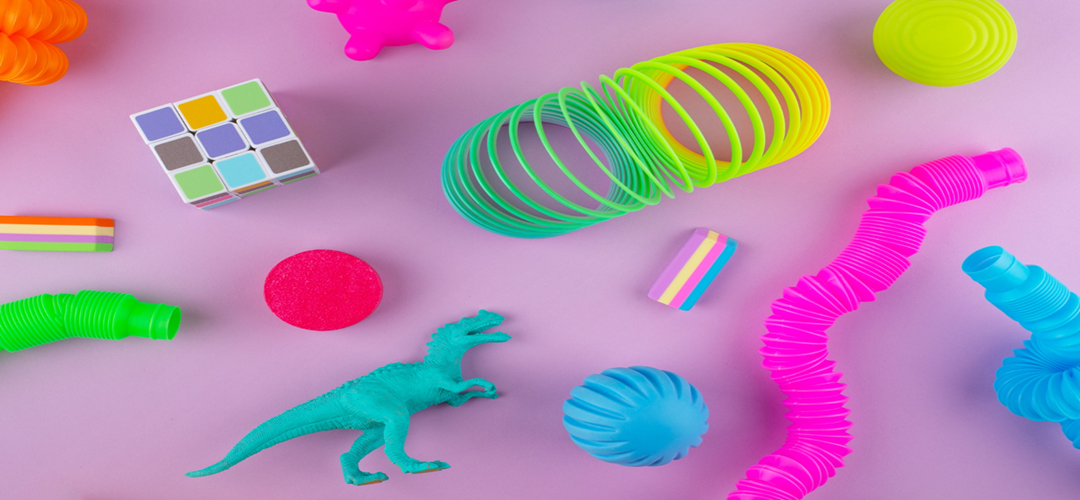Plastic moulding is a transformative manufacturing process that has revolutionized the production of a vast array of products, ranging from the everyday items we use in our homes to intricate components in industries such as automotive, electronics, and healthcare. This article explores the multifaceted world of plastic moulding, encompassing plastic mouldings and plastic moulding products. It delves into the techniques, applications, and the sustainable future of this pivotal industry.
The Art and Science of Plastic Moulding
Plastic moulding, also known as injection moulding, is a manufacturing process that involves injecting molten plastic material into a mould cavity. Once the plastic cools and solidifies within the mould, it takes on the desired shape, creating a finished product. The plastic moulding process consists of several key elements:
Mould Design: The foundation of plastic moulding begins with meticulous mould design. Engineers and designers carefully plan the shape, size, and specifications of the mould to ensure it meets the desired product’s requirements.
Material Selection: The choice of plastic material is a critical decision, as it determines the product’s properties, including strength, durability, flexibility, and heat resistance. Common plastics used include polyethylene, polypropylene, and polyvinyl chloride (PVC).
Injection Moulding Machine: This machine is the workhorse of plastic moulding. It consists of a hopper to feed plastic pellets, a heating unit to melt the plastic, an injection unit to push the molten plastic into the mould, and a cooling system to solidify the plastic within the mould.
Moulding Process: Once the plastic material is heated to a molten state, it is injected into the mould cavity under high pressure. The mould opens as it cools and hardens, and the finished product is ejected.
Types of Plastic Moulding
Plastic moulding encompasses various techniques tailored to different product requirements. The primary types include:
Injection Moulding: The most versatile and widely used technique, injection moulding can produce complex and intricate parts, making it indispensable in various industries.
Blow Moulding: Commonly used for producing hollow products such as bottles, containers, and automotive components.
Compression Moulding: Ideal for products with intricate designs or those requiring composite materials.
Extrusion Moulding: Used to create continuous shapes like pipes, tubing, and window frames.
Applications of Plastic Moulding
The applications of plastic moulding span across diverse industries, highlighting its universal importance:
Automotive: Plastic moulding plays a vital role in the automotive sector, producing interior components, exterior body parts, and intricate engine components. This contributes to lighter, more fuel-efficient vehicles.
Packaging: Plastic moulding gives rise to plastic containers, bottles, caps, and packaging materials that help preserve and protect various products, extending their shelf life.
Electronics: The precision and versatility of plastic moulding are crucial for creating intricate components in the electronics industry, including casings, connectors, and circuit board components.
Medical Devices: Critical medical equipment such as syringes, IV bags, surgical instruments, and diagnostic devices are produced using plastic moulding, ensuring precision and safety in healthcare.
Consumer Goods: Plastic moulding enables the production of a wide range of consumer goods, from toys and kitchen appliances to furniture and household accessories.
Plastic Mouldings: Aesthetic and Functional Excellence
Plastic mouldings, a subset of plastic moulding, refers to the intricate shapes and designs created using this manufacturing process. They serve both aesthetic and functional purposes in various applications. Here’s how plastic mouldings make a difference:
Aesthetic Appeal: Plastic mouldings allow for intricate and decorative designs that enhance the visual appeal of products, including architectural elements, furniture, and consumer goods.
Customization: The versatility of plastic mouldings enables customization, offering businesses and designers the flexibility to create unique and tailored products.
Enhanced Functionality: In addition to aesthetics, plastic mouldings can improve the functionality of products. They can be designed to provide better grip, ergonomic comfort, or structural reinforcement.
Moulding Plastic: A Sustainable Perspective
In an era of increasing environmental awareness, the plastic moulding industry is embracing sustainability in various ways:
Material Innovation: The development of biodegradable plastics and the use of recycled materials reduce the environmental impact of plastic products, making them more sustainable.
Energy Efficiency: Modern injection moulding machines are designed to be energy-efficient, reducing electricity consumption and carbon emissions during production.
Recycling Initiatives: Many plastic moulding companies have implemented recycling programs to minimize waste and promote the circular economy.
Eco-Friendly Processes: Some companies are adopting eco-friendly moulding techniques, such as gas-assisted injection moulding, which reduces material usage and energy consumption.
Reducing Packaging Waste: The production of lightweight, durable plastic packaging reduces overall packaging waste.
Plastic Mould: The Heart of the Process
The term “plastic mould” refers to the tooling or mould itself, which is instrumental in shaping the final product. The design and quality of the plastic mould are paramount to the success of the moulding process. Key considerations for plastic moulds include:
Precision Engineering: Moulds must be designed with extreme precision to ensure the final product meets the desired specifications and tolerances.
Material Compatibility: The choice of mould material must be compatible with the specific plastic material being used to prevent issues such as warping, sticking, or degradation.
Durability: Moulds need to withstand thousands or even millions of cycles, so they must be durable and resistant to wear and tear.
Ease of Maintenance: Regular maintenance and cleaning are essential to prolong the life of moulds and maintain product quality.
Cost-Efficiency: Balancing the initial cost of mould creation with long-term performance is crucial for manufacturers.
Plastic Mould Products: Precision in Every Piece
The term “plastic mould products” encompasses the wide range of finished goods produced through plastic moulding processes. These products span various industries and have a profound impact on our daily lives. Let’s explore some notable examples:
Automotive Parts: Plastic moulding contributes to the production of interior components like dashboards and door panels, as well as exterior elements such as bumpers, grilles, and headlights.
Consumer Electronics: The sleek casings and components of smartphones, laptops, and other electronic devices are often the result of plastic moulding.
Medical Equipment: Critical medical devices, including syringes, catheters, and drug delivery systems, rely on the precision and consistency achieved through plastic moulding.
Packaging Materials: Plastic moulding produces a vast array of packaging materials, from bottles and containers to caps and closures, ensuring product protection and convenience.
Toys and Games: Plastic moulding brings to life the toys and games that entertain and educate children and adults alike.
Plastic Moulding Products: The Key to Innovation
The term “plastic moulding products” encompasses the end products that are manufactured using plastic moulding techniques. These products are a testament to the versatility and adaptability of plastic moulding in serving a wide range of industries and purposes. Some notable plastic moulding products include:
Injection Moulded Toys: The toy industry benefits from plastic moulding by producing action figures, dolls, and construction sets with intricate details and vibrant colours.
Medical Devices: Critical medical equipment, including syringes, IV components, and diagnostic devices, relies on plastic moulding for precision and safety in healthcare.
Automotive Components: Plastic moulding is instrumental in creating lightweight yet durable automotive components, such as interior panels, exterior trim, and engine parts.
Packaging Solutions: Plastic moulding plays a significant role in packaging, producing bottles, containers, and closures that safeguard and preserve a wide range of products.
Consumer Electronics: The sleek and functional casings of smartphones, laptops, and electronic gadgets are often the result of precision plastic moulding.
Construction Materials: Plastic moulding produces components used in construction, such as PVC pipes, fittings, and insulation materials.
Sustainability: The Future of Plastic Moulding
The future of plastic moulding lies in sustainability, driven by the pressing need to reduce environmental impacts. Here’s how the industry is evolving:
Biodegradable Plastics: The development of biodegradable plastics ensures that products have a reduced environmental footprint and degrade naturally over time.
Recycling Initiatives: Plastic moulding companies are actively engaged in recycling programs to reduce waste and promote the reuse of materials.
Energy-Efficient Processes: Injection moulding machines are becoming more energy-efficient, reducing electricity consumption and greenhouse gas emissions.
Eco-Friendly Materials: The use of eco-friendly materials, such as recycled plastics and bioplastics, is on the rise, contributing to sustainability efforts.
Waste Reduction: Innovations in reducing material waste during production processes are being adopted to minimize environmental impact.
Plastic moulding is an industry that continually reshapes the world around us, producing everything from life-saving medical devices to everyday consumer products. It encompasses a broad spectrum of techniques, materials, and applications, all driven by precision, innovation, and sustainability.
Plastic mouldings and plastic moulding products are interconnected facets of this dynamic industry, each playing a unique role in delivering quality and functionality to the products we rely on. As the world increasingly prioritizes sustainability, the plastic moulding industry is embracing eco-friendly practices, paving the way for a more environmentally conscious future.
The versatility, efficiency, and adaptability of plastic moulding ensure that it will remain a vital part of manufacturing and construction for years to come, shaping innovation, efficiency, and sustainability in countless ways we may not yet have imagined. It is an industry that not only moulds plastic but also moulds the future of our world.






